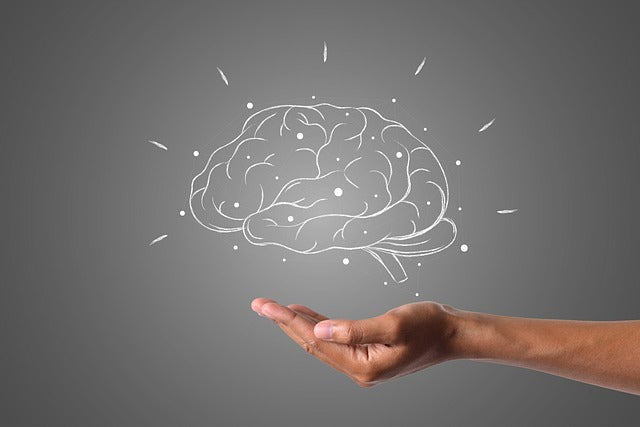A Liposomal Adaptogenic Blend Directed at Female Physiology
“'The great question that has never been answered,” confessed famous psychoanalyst Sigmund Freud, “and which I have not yet been able to answer, despite my thirty years of research into the feminine soul, is "What does a woman want?”1
There’s at least one seemingly straightforward answer to that. A woman wants balanced hormones. She doesn’t want to suffer from premenstrual headache, bloating, weight gain, sore breasts, irritability, depression, and moodiness every month. Nor does she want to endure the soaking sweats, hot flushes, insomnia and flagging energy of perimenopause. She doesn’t want the vaginal dryness that may come with waning hormones as she ages or the fibroids that may bloom in the presence of too much estrogen. She even may want a libido and sex drive to rival that of men’s, one that does not take a dive immediately after it peaks before menopause. In essence, she wants her hormonal cycle—a delicate and complex choreography compared to men’s—to be a source of joy, energy, and feminine power.
But it isn’t always easy to achieve. Herbalist Daniel Moriarty, founder of Sun Horse Energy and creator of the Thrivagen Formula, knows that firsthand. “My mom was an herbalist, and women used to come over to our house endlessly for help with hormonal issues. Then I met my current partner, Mona. The first time I saw her suffer through her menstrual period, I was ready to call 911. She was sweating and shivering and in such incredible cramping pain. When I realized she went through this every month I knew I had to do something to help her.”
Moriarty spent two years tweaking a uniquely female formula with herbs suited to women’s health. He chose adaptogens, nontoxic and potent herbs that stabilize and restore normal physiological functioning, increase resistance to long-term stress and are often immune-modulating.2,3 To qualify as an adaptogen, an herb must have a balancing effect on the mental and physical response to stress. Adaptogens are bi-directional, meaning they can either calm the activity of hyperactive systems, or boost and stimulate activity of weak systems in the body--particularly the endocrine, nervous and immune systems.
Every small incremental change in ratios of the herbs Moriarty blended had a huge effect on Mona. “God blessed the bumpy road that led her to me,” he says, “because she was so sensitive and yet so willing to experiment.”
Today, Mona has completely normal menstrual cycles, and the blend of herbs she inspired is the company’s top selling formulation. Moriarty views the formula as having two aspects. First, are the synergistic general adaptogens also found in the popular combination, Nano Mojo, formulated in different ratios geared to female physiology and sensitivity. Moriarty says these adaptogens activate all cells in the body and bring their charge and function up. Second are the women’s adaptogens, also included in very specific ratios to support their function, of which he says, “they are like the conductors of a symphony.” These botanicals are:
- Shatavari (Asparagus racemosus): This herb is a favorite Ayurvedic tonic for females, and common throughout Nepal, Sri Lanka, India and the Himalayas. The translation of its name says it all: “The one who possesses a hundred husbands”—implying a woman of potent seductive ability and fertility, as well as the stamina and patience to handle multiple men. Structurally, the active constituents of this herb are similar to estrogen produced within the body, yet these plant-derived estrogens, known as phytoestrogens, have a more gentle, and balancing effect.4 It is reputed to be beneficial in female infertility, to moisten dry vaginal tissues, enhance ovulation, and act as post-partum tonic by increasing lactation.5,6,7 It also can reduce painful periods (dysmenorrhea) and premenstrual syndrome.8,9,10
- Ashwagandha (Withania somnifera): Ashwagandha is another revered Ayurvedic herb, with a 6000-year-old reputation for protecting against the effects of acute and chronic stress.11,12,13 It is often referred to as the Indian ginseng, because it compares well with Siberian Ginseng (Eleutherococcus senticosus) and Chinese Ginseng (Panax ginseng). It has been shown to increase physical endurance and may increasetestosterone levels. 14,15 Testosterone is an essential hormone for women as well as men, and low testosterone is associated with low libido.16 In animal studies, the herb’s calming effect was pronounced, as was its antidepressant effect.17
- Angelica (Angelica archangelica). Angelica belongs to the parsley family, and the dried root is used medicinally in both western and Asian traditional medicine. This particular herb is a cousin of the well-known Chinese herb, dong quai (Angelica sinensis), which has long been regarded as a potent female tonic. The roots and leaves of both Angelica spp. are warming, strengthening, and energizing to the reproductive organs and endocrine systems. Angelica is regarded as a woman’s herb in part because it increases blood flow and circulation, and can relieve menstrual cramps by warming, decongesting, and stimulating menstrual flow.18 Traditionally, Angelica species have been used to regulate menstruation, relieve menstrual cramping, balance hormones, and smooth the challenging experiences of both childbearing and menopause. Angelica contains generous amounts of hormonal precursors—phytosterols such as glycocides, saponins, and flavonoids.19
Angelica has an almost mystical quality. A 2011 review article on this herb calls it an “angel on earth,” and recounts how its name was “derived from a monk’s dream in which St. Michael, the Archangel, appeared telling the monk what herb to use to help victims of the bubonic plague that was decimating Europe in 1665.”20 Renowned herbalist Stephen Harrod Buhner describes how angelica helped a young woman recover from heavy, irregular, cramping periods. “I told her there was a plant I thought she should meet. We went for a walk through a pine forest, and when she saw the plant at the edge of a stream, a kind of force drew the woman and the plant together. The plant was Angelica, which has been used for thousands of years to help treat menstrual cramping. She spent a long time with it, then said a prayer and asked for help, and then we went to look for just the right Angelica. When we found it, she dug up the root, which has a beautiful smell. On the walk back she held it close to her. She was already carrying herself differently. The healing had started. She took a tincture made from the root, and within a month her period had normalized.”21
- Chaste tree berry (Vitex agnus-castus): Chaste tree berry has active molecules that mimic the female hormone progesterone. A review of twelve randomized, controlled trials found that the herb was effective in ameliorating premenstrual syndrome and premenstrual dysphoric disorder (moodiness and depression).22 Premenstrual breast pain also improved with chaste tree berry.23,24
Although some practitioners use these herbs as monotherapies, the combination may have a synergistic effect, balancing both the hypothalamic-pituitary-ovary and the slightly more well-known hypothalamic-pituitary-adrenal (HPA) axis. The liposomal blend of these herbs is especially potent, allowing for rapid intraoral absorption and enhanced cellular delivery. Liposomal formulations have demonstrated abilities to deliver nutrients throughout the tissues in the body, and have sustained delivery. This enables once or twice daily dosing to have a prolonged systemic effect, supporting energy and balanced function throughout the day.
Related blogs:
1. NanoMojo: A Liposomal Adaptogenic Tonic Forged From A Global Selection of Medicinal-Grade, Potent Herbs
2. Sperm Counts Are Plummeting, and Researchers Think They Know Why
3. Humble but Powerful: Cruciferous Vegetables Detoxify via a Potent Molecule Called DIM
References:







